28 Apr Cultivating Creativity with Jason Ebinger
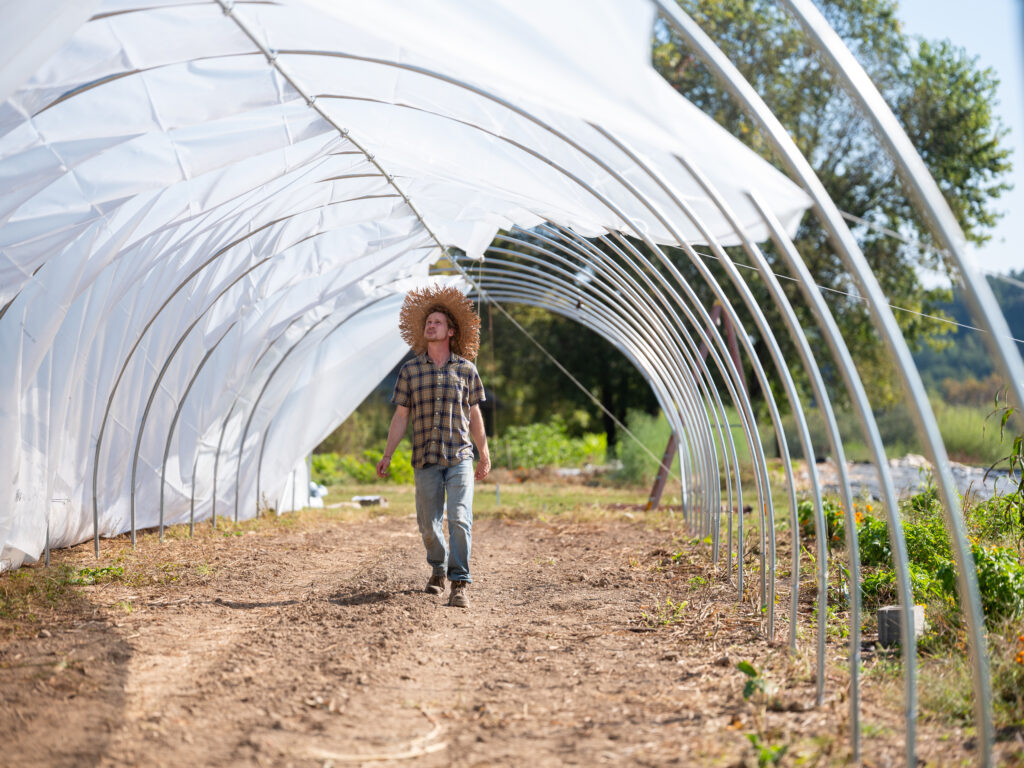
Jason Ebinger in the garden.
On clear sunny days, Jason the gardener can be found among perennial beds, weaving between tilled soil. A large straw hat perches atop his head, reflecting the golden sun off his nape.
“I’ve been here- it’ll be four years in May, and I’ve known about the Folk School for a while. It just seemed like it was always a place with lots going on, lots of good people,” Jason said.
Hailing from Atlanta, Jason Ebinger originally worked with livestock and edible crops, it was not until his introduction to the Folk School that he would consider cultivating craft materials as well.
“People have distinct experiences here, and everyone’s experiences are just a little bit different. I think what might be a common thread is people grow often in a way they expect to grow here, and I think always in a way they didn’t expect to grow,” Jason said.
When he isn’t in the greenhouse or harvesting crops, Jason is working closely with work studies on campus. The work-study program allows students to supply voluntary labor in exchange for discounted tuition.
“A very explicit part of the work study program is doing the garden work. Our work study program has grown in the past few years. Now we have more people working in the garden and, therefore, have grown the garden a little bit and produced more in the past few years, both in terms of food crops and craft materials,” Jason said.
The work study crew typically consists of four to eight people working per week. Jason must make sure the work crew has access to the right materials and tools, ensuring everyone knows their roles and responsibilities well.
“One of the things I enjoy most is getting to work with so many different people from diverse backgrounds, age groups and people of different levels of experience in the garden. It becomes a really collaborative project with so many people,” Jason said.
According to Jason, the focus on shared learning and being around so many knowledgeable people is what encouraged him to become a part of the Folk School the most.
“I really enjoy not only getting to know all those people who are part of the program and therefore part of the garden, but I also really enjoy getting to be an element of continuity that’s helping keep the project going from one session to the next. Kind of holding a vision that goes beyond just the nine weeks of any given session,” he said.
Work studies play a significant role in the schools’ ecosystem, ensuring everything runs smoothly. Jason collaboratively manages these groups of students and makes connections beyond the time they have in the garden.
“The garden is continuing to make connections and cultivate relationships with instructors who use materials from it. There’re more connections there: I just got a letter and a sample from a papermaking instructor who is really excited about using a variety of different plants in the garden for papermaking which is something we’ve one a little bit of. Always finding it easier for the garden to enter the studios in some way,” Jason said.
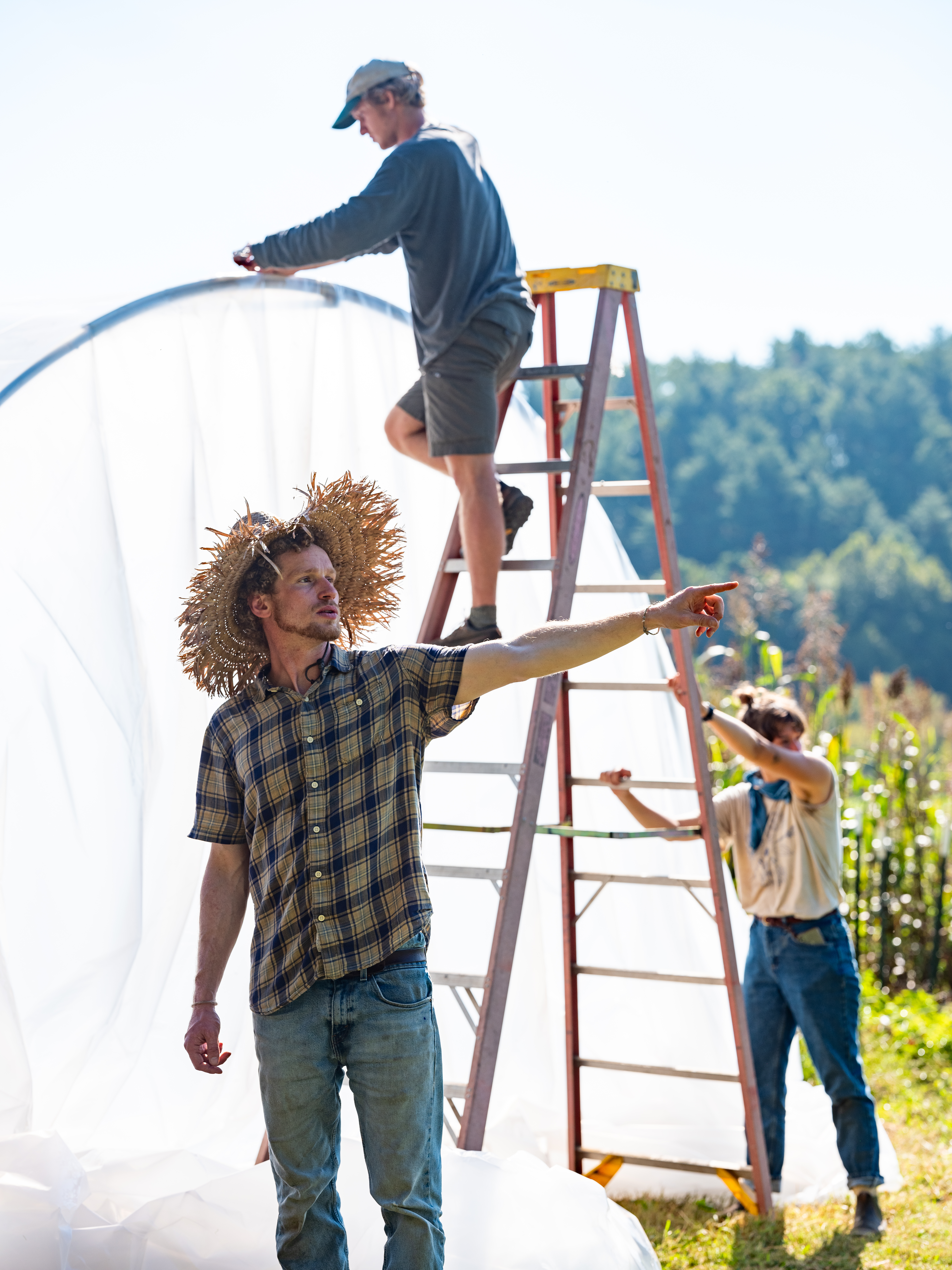
Jason giving directions in the garden.
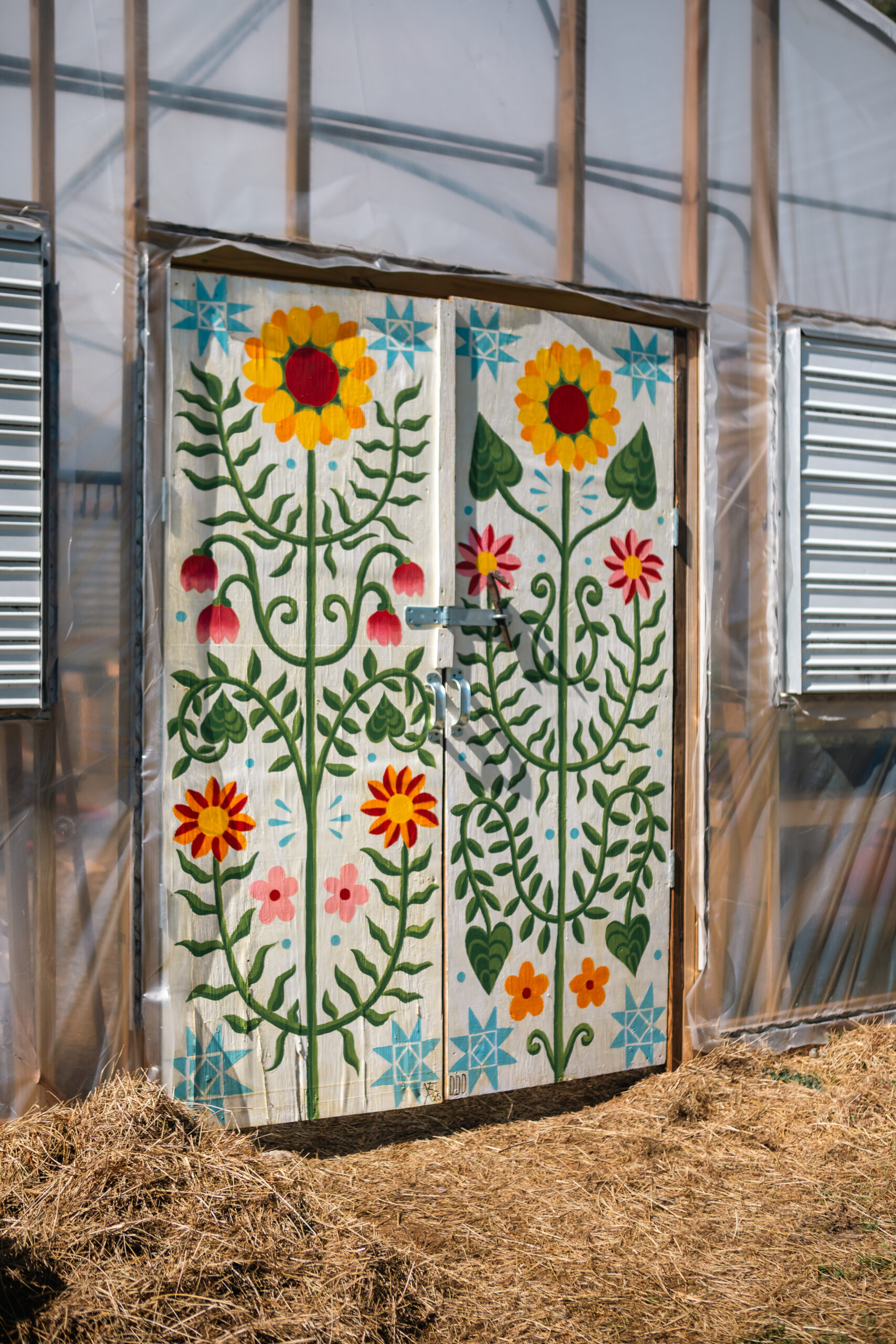
The freshly painted greenhouse door recently completed by work studies.
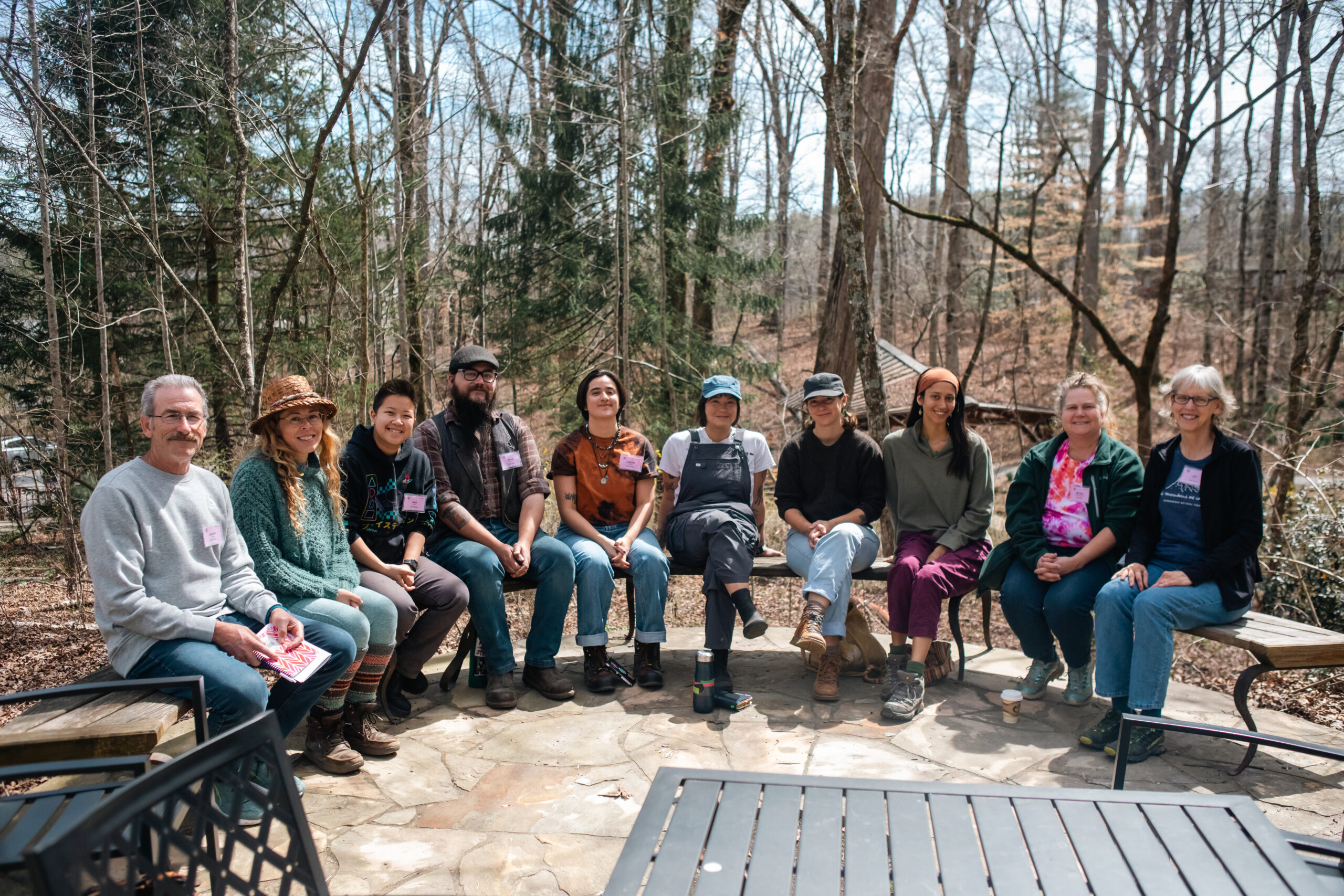
Our wonderful group of work studies for spring of 2025!
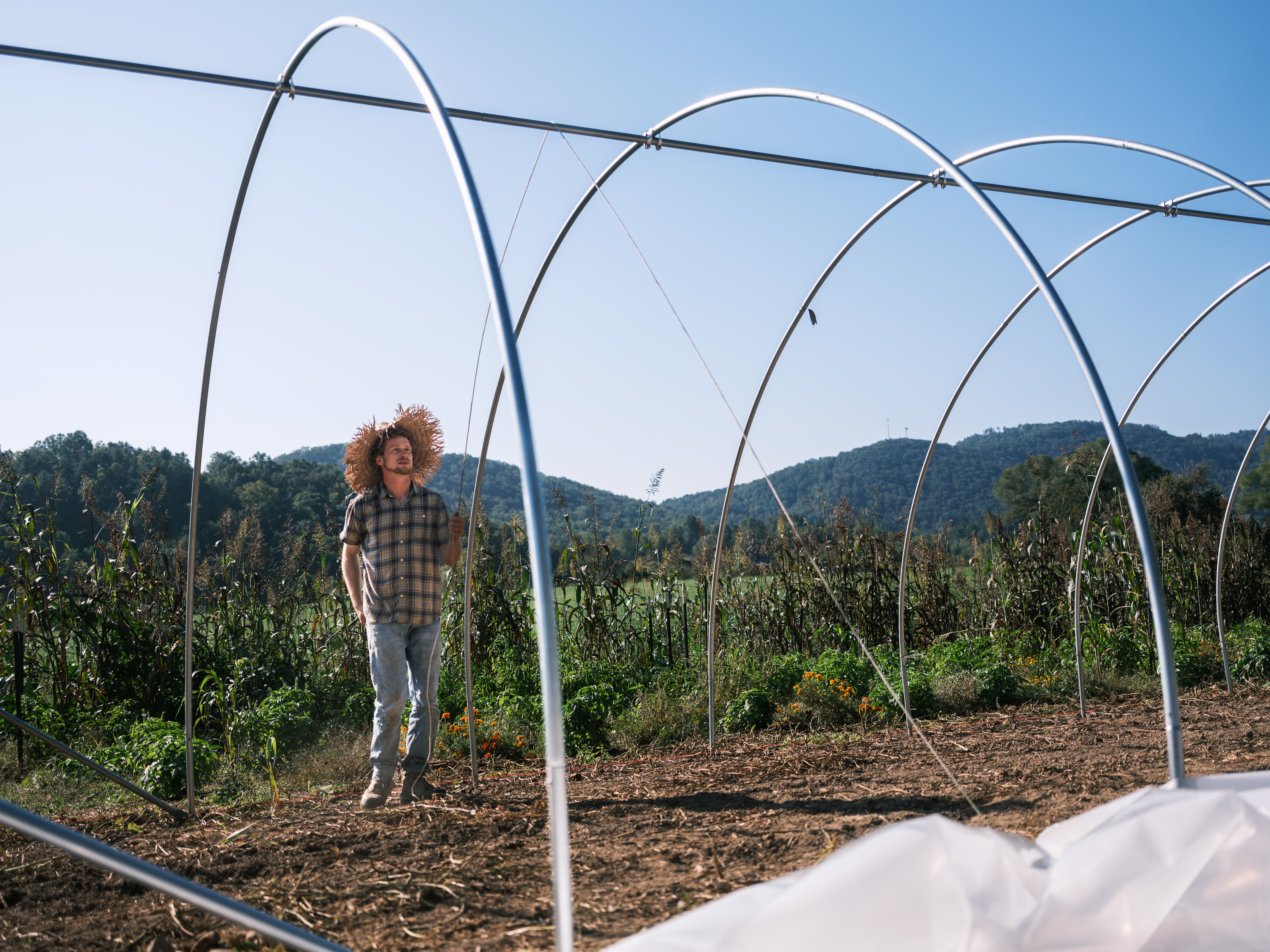
Jason setting up in the garden.
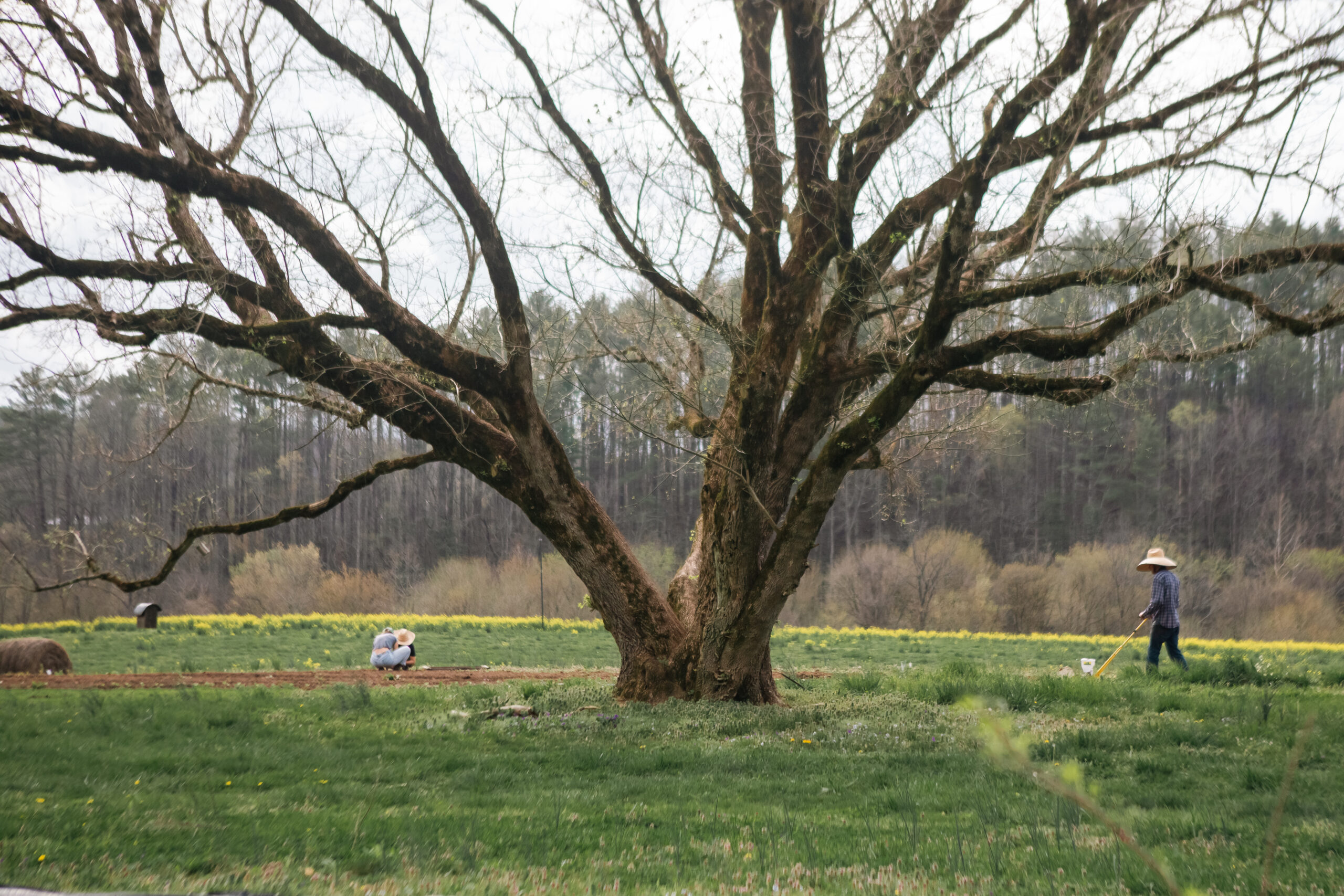
Jason and the hard at work in the fields of the main garden.
As the weather warms spring lays her blanket of pollen upon the valley, campus begins to flourish. Shrubs and Perennials must be trimmed, and trees planted. Carrots, beets and fennel have all been placed in the garden’s soil.
“We have lots of classes using invasive wild vines like bittersweet, honeysuckle and kudzu that are most helpful. That gives us a really clear point to interact with the natural world in which we can both be harvesting materials that are useful for us and doing something to shape our environment and cultivate our relationship with the natural world,” Jason said.
Recently, Jason has delved into weaving willow baskets. Working with the materials that grow in the garden grants him extra context on how to approach the growing process.
“For me, it’s important to learn about the material in whatever way I can. If I’m growing it, I want to make sure, even if it’s not something I’m going to put a lot of time or energy into, I want to experience it at least once, so I can understand people who do work with that material more regularly,” he said.
The Folk School attracts a multitude of talented artists who come to share their expertise. It is not uncommon for instructors and other community members to share their plethora of knowledge for the benefit of the garden.
“There’ve been a handful of instructors and other people in this community who have taught me about their specific crafts, material and the qualities of that material. So, all the details you need to know so I can understand what they’re talking about and learn something about how I can amend how I’m growing it, storing it, or process it, so it’s going to make the process go better for the maker,” he said.
Surrounded by makers and immersed in this world of craft, Jason regularly experiments with different materials and crafts in his own time.
“Not as specifically related to my job, I’ve been learning a lot about working with wool. Just the full process of taking things from raw fleece to making yarn and the things you can make with that yarn. Of course, you can dye wool with the plants that we’re growing here, so that’s something I’ve been learning more about and experimenting with some. Especially when I have the guidance of other people who’ve done that more,” he said.
The Folk School is enriched with creativity and inspiration. Students, instructors and visitors can all find value and inspiration when they step foot onto the historical campus.
“There’s always something, in a way, whether it’s something as big and obvious as a new class and a new craft area that is now a place of interest and excitement, or it could be much more subtle such as learning about oneself in relation to others. The community living aspect of the program is a big part of it.” he said.
Jason and the work studies weave their stories into the school’s history, the harmony of collaboration carrying them into the future. From the creaky boards of Keith house to the soil beneath Jason’s feet, the Folk School has harbored a century of hands-on, community-led collaboration– sowing the fruits of legacy and fellowship we know today.
“One that is a favorite for me to hear is when people end up leaving with the feeling of having gained more from their work experience, their time in the garden, than anything else here. I think for a lot of people, even if there’s some excitement about working in the garden, it might not be what drew them here, but I think it’s not an uncommon experience for the garden to stick out as one of the most memorable or impactful of their time,” he said.
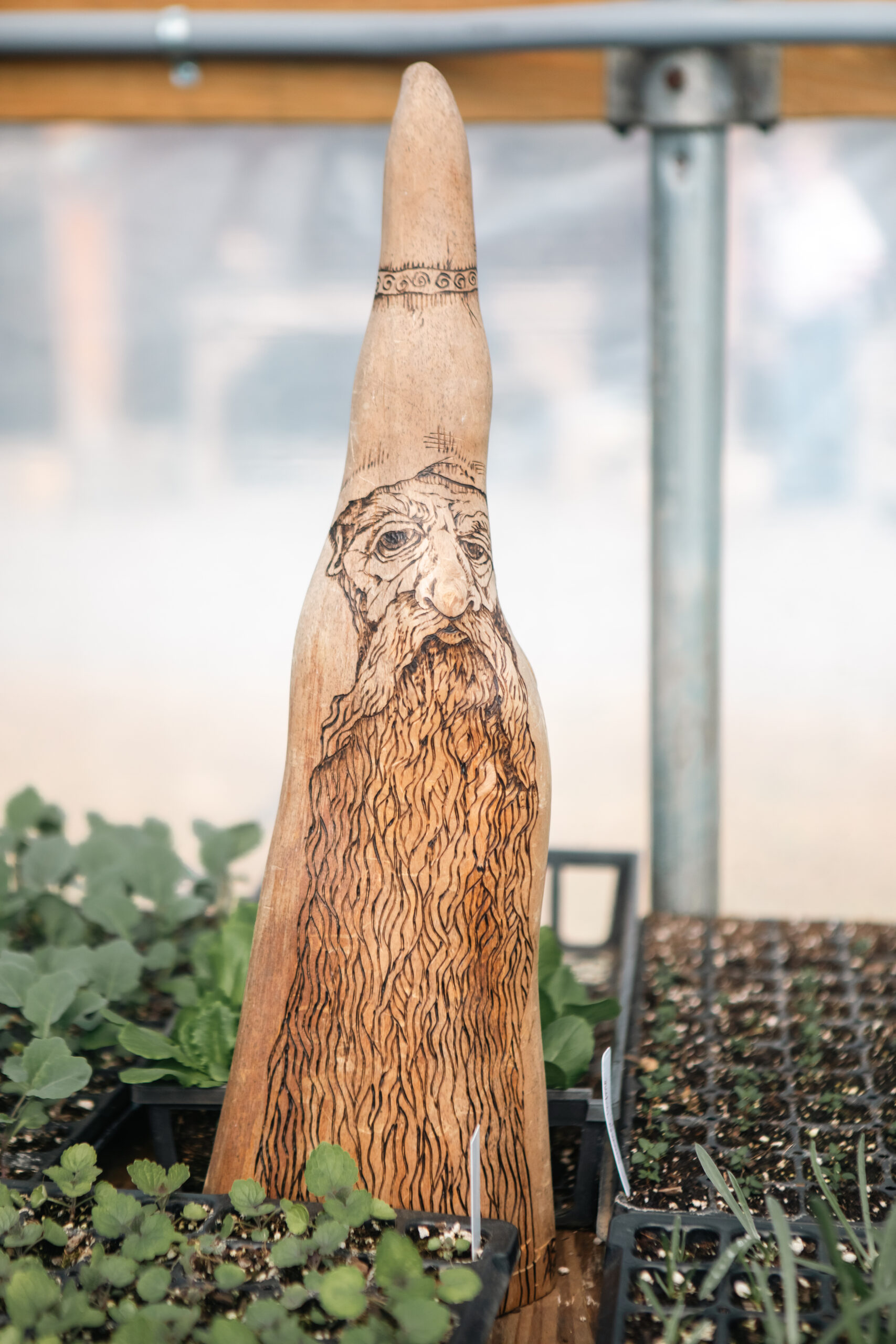
A wooden garden gnome in the greenhouse.
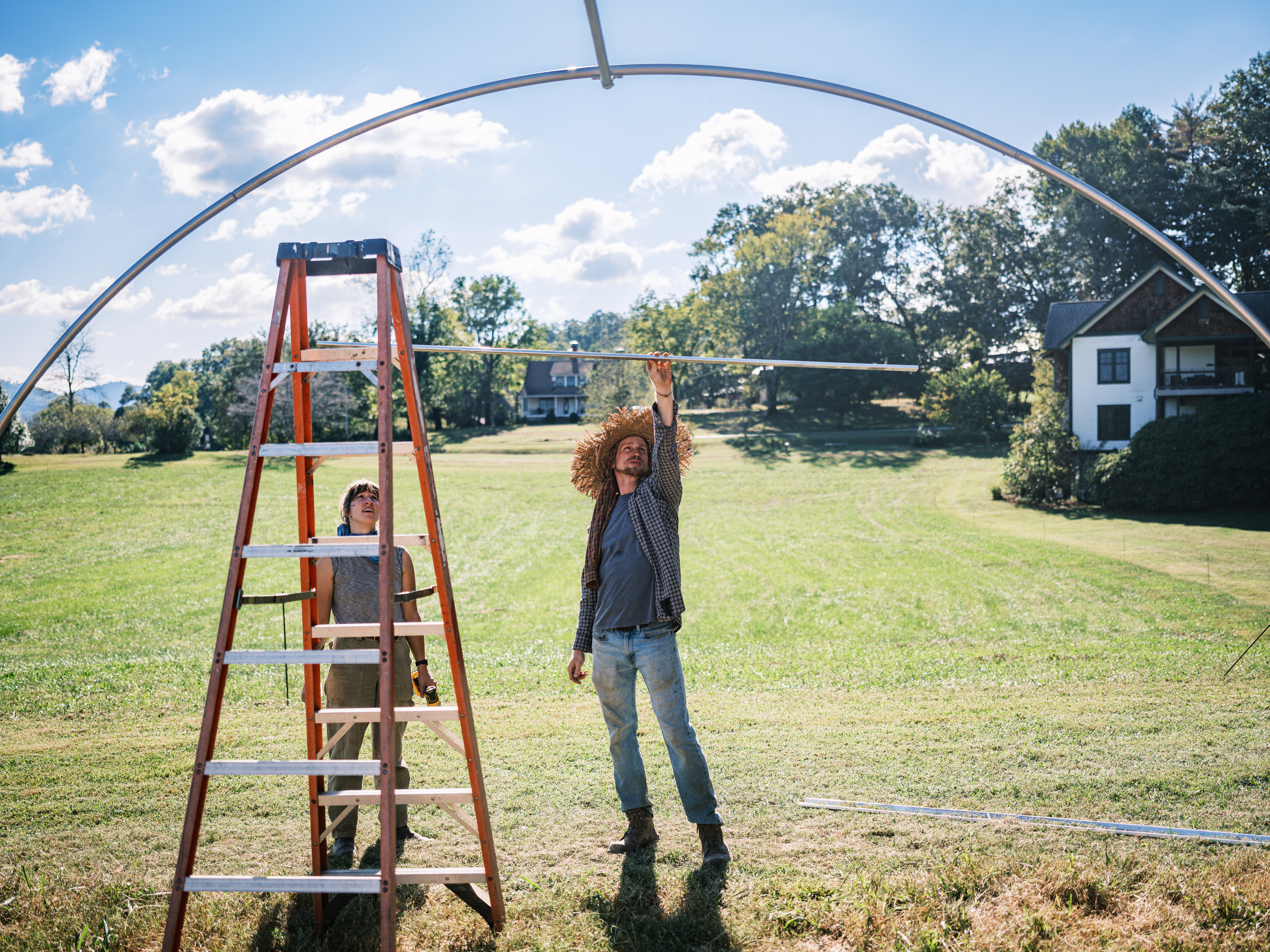
Jason and a work study making improvements to the garden.



No Comments